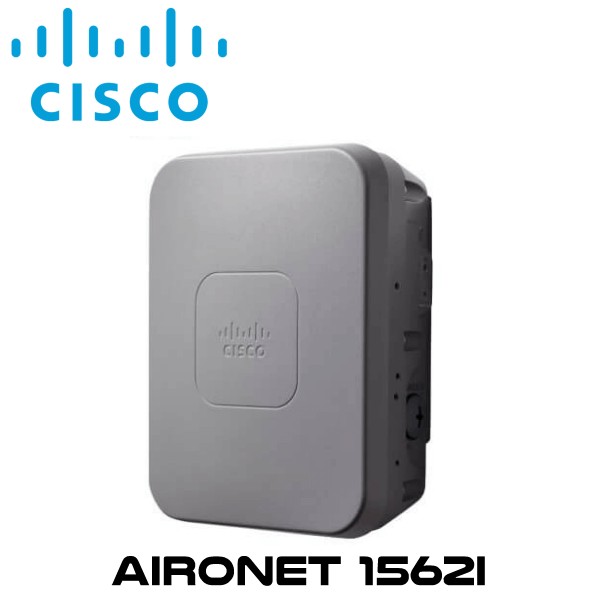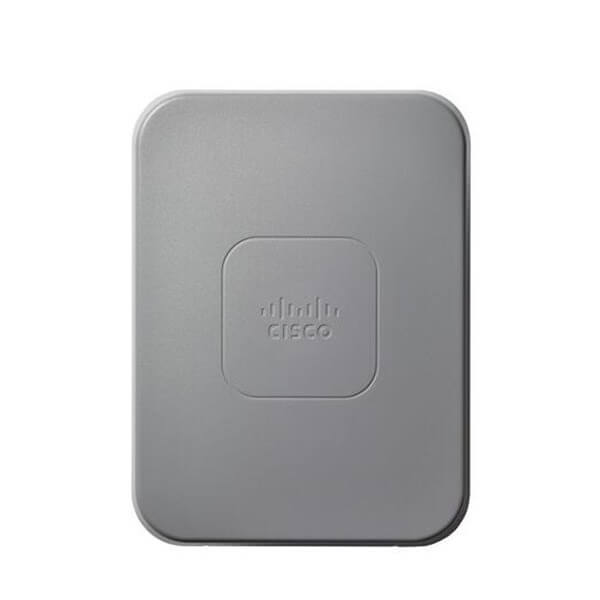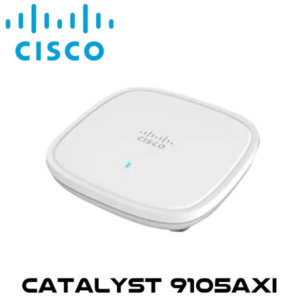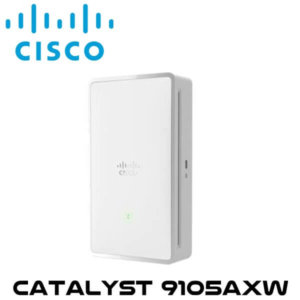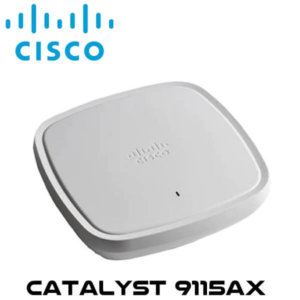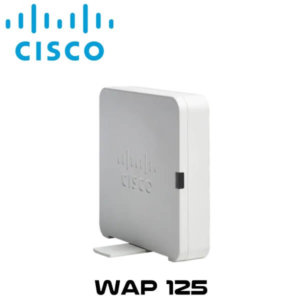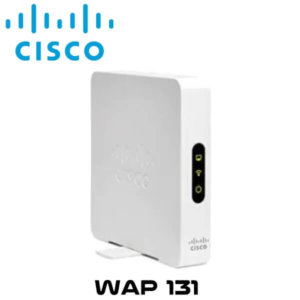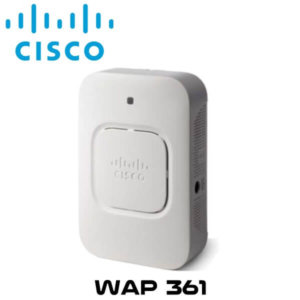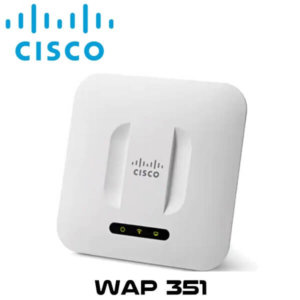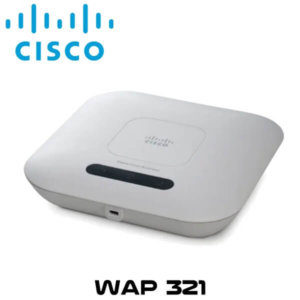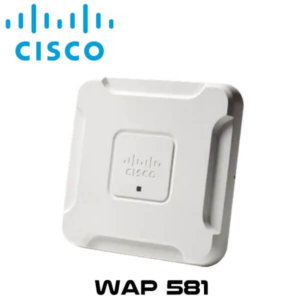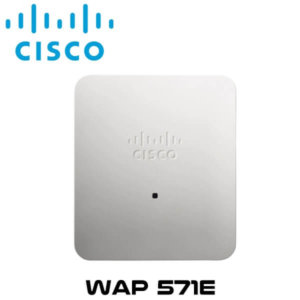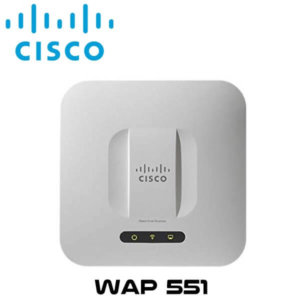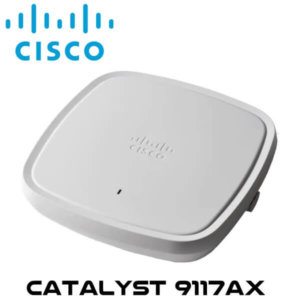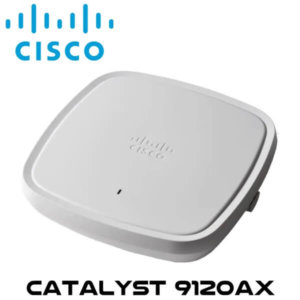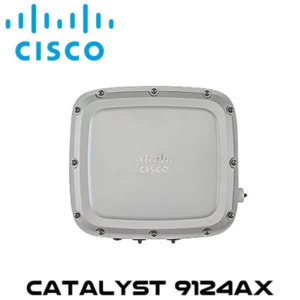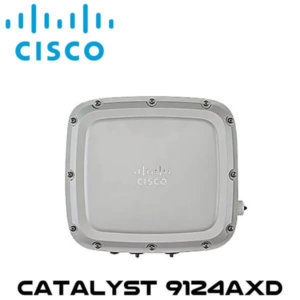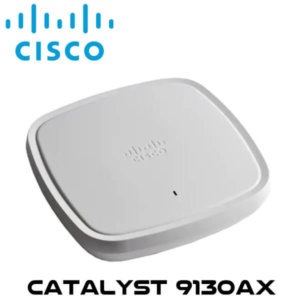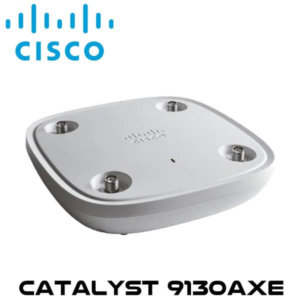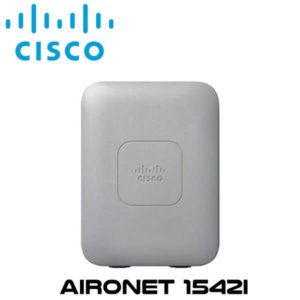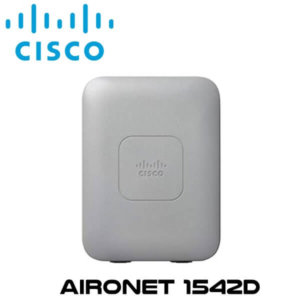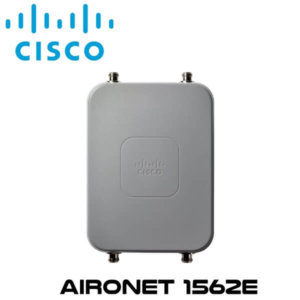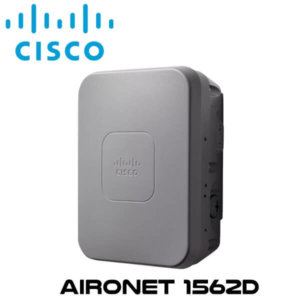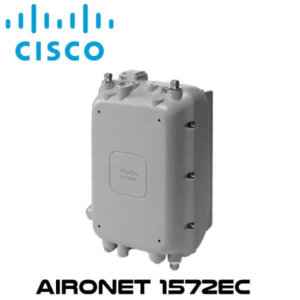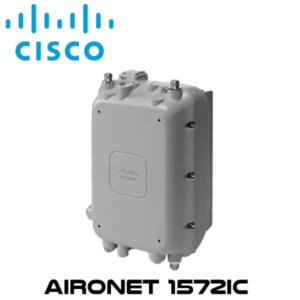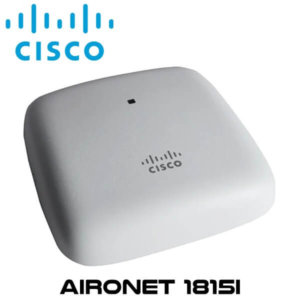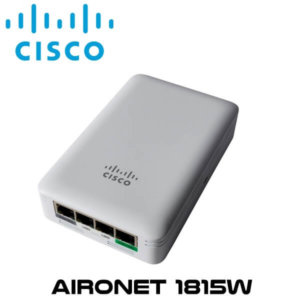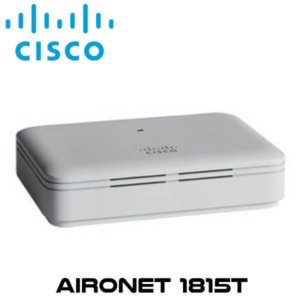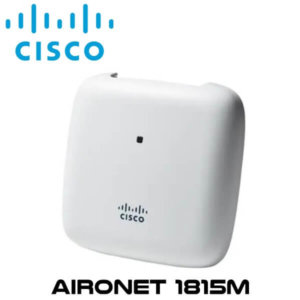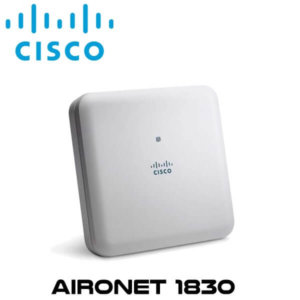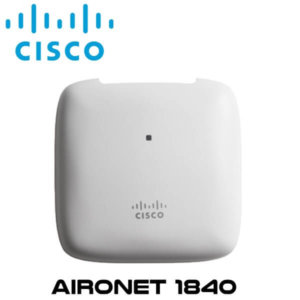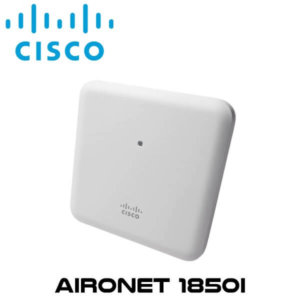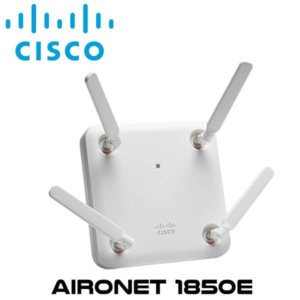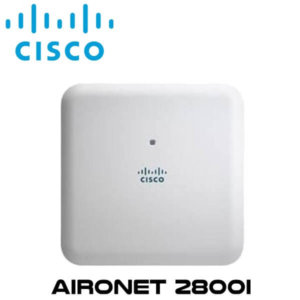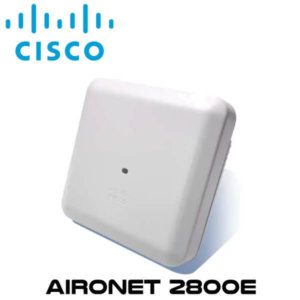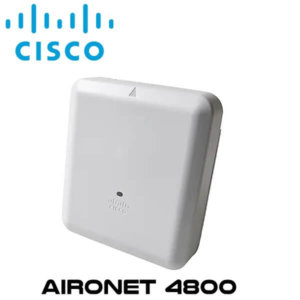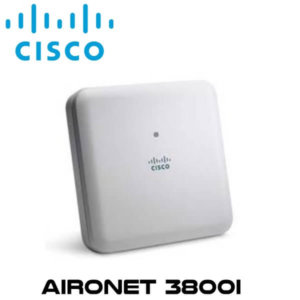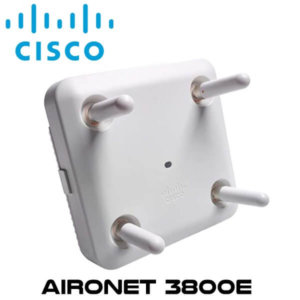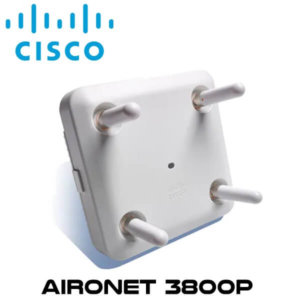Description
Cisco Aironet1562I Access Point Kenya
Cisco Aironet1562I Kenya is ideal for applications requiring rugged outdoor Wi-Fi coverage, this Cisco WiFi Kenya Access Point offer the latest IEEE 802.11ac Wave 2 radio standard in a compact, aesthetically pleasing, easy-to-deploy package. Its CleanAir® technology uses intelligence to create a spectrum-aware, self-optimizing and self-healing network that minimizes wireless interference. The Cisco Aironet1562I Kenya features ClientLink that supports innovative signal processing and multiple transmission paths to optimize 802.11a/g/n reception. Use its dynamic frequency selection to switch the AP to less congested channels for priority traffic transmission. This Cisco WiFi Kenya has media access control address filtering allows a user to establish access controls to secure the network. Leverage its radio resource management to ensure resource efficiency via power control and dynamic transmitter channel. Have flexible deployment nodes using the 802.11ac wave 2 access point. These nodes include mesh and P2P networks that aid simple configuration and set-up in small to medium-level deployments. Transmit data concurrently over three spatial streams via its 3×3 multiple-input multiple-output (MIMO) functionality. The MIMO technique utilizes the internal Omni-directional antennae to expand the network capacity. Since it has a 1.3Gbps data rate, it fosters throughput and workflow across its 2.4GHz and 5GHz dual bandwidth.
Features
802.11ac Wave 2 radio
Cisco Aironet1562I Kenya provides up to 1.3-Gbps data rates with 3 x 3 Multiple Input, Multiple Output (MIMO) and up to three spatial streams
Multiuser MIMO (MU-MIMO)
Allows transmission of data to multiple 802.11ac Wave 2-capable clients simultaneously to improve client experience; prior to 802.11ac Wave 2, access points could transmit data to only one client at a time, typically referred to as single-user MIMO
Flexible deployment modes
Cisco Aironet1562I Kenya has a variety of ways of deployment including: point -to-point and mesh networks; it can also be deployed with the Cisco Mobility Express Solution, which is ideal f or small to medium -sized deployments that supports multiple access points without a physical controller; all deployment modes are easy to set up and configure
Small Form-Factor Pluggable (SFP) port
Cisco Aironet1562I Kenya supports optical fiber-based network connectivity for remote locations
Improved performance for multiple client devices: The 802.11ac Wave 2 access points use MU-MIMO technology, which allows different data streams to all flow at once from the access point to multiple 802.11ac Wave 2-supported devices. Now, multiple 802.11ac Wave 2 devices can connect at the same time, getting the information they need quicker.
5-GHz support
The Cisco Aironet 1560 Series doubles the scale of 5 -GHz mobile devices and raises the performance of high-density environments.
4G LTE Coexistence
The Cisco Aironet 1560 Series includes robust filtering around the 2.4 GHz unlicensed band to block out nearby licensed 4G LTE cellular signals.
Cisco Flexible Antenna Port technology
Cisco Aironet1562I Kenya uses software configurable for either single- or dual-band antennas. It allows you to use the same antenna ports for either dual-band antennas to reduce footprint or single-band antennas to optimize radio coverage.
Cisco Mobility Express
This Cisco WiFi Kenya solution is designed to bring enterprise-class wireless access to small and medium-sized networks. Easy to set up with low maintenance, Mobility Express includes advanced features from Cisco and does not require a physical controller appliance.
Cisco High Density Experience (HDX)
Cisco HDX comes standard on the 1560 series, giving this access point top-of-the-line network efficiency over a large number of wireless clients. HDX uses customized chipsets to target the needs of high-density networks. It is built with best-in-class RF architecture and gives a better user experience for high-performance applications.
Specifications
| 802.11ac Wave 1 and 2 capabilities |
|
|||||||||||
| 802.11n (and related) capabilities |
|
|||||||||||
| Data rates supported |
|
|||||||||||
| 802.11n data rates on 2.4 and 5 GHz: | ||||||||||||
| MCS Index | GI4 = 800 ns | GI = 400 ns | ||||||||||
| 20-MHz Rates (Mbps) | 40-MHz Rates (Mbps) | 20-MHz Rates (Mbps) | 40-MHz Rates (Mbps) | |||||||||
| 0 | 6.5 | 13.5 | 7.2 | 15 | ||||||||
| 1 | 13 | 27 | 14.4 | 30 | ||||||||
| 2 | 19.5 | 40.5 | 21.7 | 45 | ||||||||
| 3 | 26 | 54 | 28.9 | 60 | ||||||||
| 4 | 39 | 81 | 43.3 | 90 | ||||||||
| 5 | 52 | 108 | 57.8 | 120 | ||||||||
| 6 | 58.5 | 121.5 | 65 | 135 | ||||||||
| 7 | 65 | 135 | 72.2 | 150 | ||||||||
| 8 | 13 | 27 | 14.4 | 30 | ||||||||
| 9 | 26 | 54 | 28.9 | 60 | ||||||||
| 10 | 39 | 81 | 43.3 | 90 | ||||||||
| 11 | 52 | 108 | 57.8 | 120 | ||||||||
| 12 | 78 | 162 | 86.7 | 180 | ||||||||
| 13 | 104 | 216 | 115.6 | 240 | ||||||||
| 14 | 117 | 243 | 130 | 270 | ||||||||
| 15 | 130 | 270 | 144.4 | 300 | ||||||||
| 16 | 19.5 | 40.5 | 21.7 | 45 | ||||||||
| 17 | 39 | 81 | 43.3 | 90 | ||||||||
| 18 | 58.5 | 121.5 | 65 | 135 | ||||||||
| 19 | 78 | 162 | 86.7 | 180 | ||||||||
| 20 | 117 | 243 | 130 | 270 | ||||||||
| 21 | 156 | 324 | 173.3 | 360 | ||||||||
| 22 | 175.5 | 364.5 | 195 | 405 | ||||||||
| 23 | 195 | 405 | 216.7 | 450 | ||||||||
| 802.11ac Data Rates (5 GHz) | ||||||||||||
| Spatial Streams | MCS | GI = 800 ns | GI = 400 ns | |||||||||
| 20 MHz | 40 MHz | 80 MHz | 20 MHz | 40 MHz | 80 MHz | |||||||
| 1 | 0 | 6.5 | 13.5 | 29.3 | 7.2 | 15 | 32.5 | |||||
| 1 | 1 | 13 | 27 | 58.5 | 14.4 | 30 | 65 | |||||
| 1 | 2 | 19.5 | 40.5 | 87.8 | 21.7 | 45 | 97.5 | |||||
| 1 | 3 | 26 | 54 | 117 | 28.9 | 60 | 130 | |||||
| 1 | 4 | 39 | 81 | 175.5 | 43.3 | 90 | 195 | |||||
| 1 | 5 | 52 | 108 | 234 | 57.8 | 120 | 260 | |||||
| 1 | 6 | 58.5 | 121.5 | 263.3 | 65 | 135 | 292.5 | |||||
| 1 | 7 | 65 | 135 | 292.5 | 72.2 | 150 | 325 | |||||
| 1 | 8 | 78 | 162 | 351 | 86.7 | 180 | 390 | |||||
| 1 | 9 | – | 180 | 390 | – | 200 | 433.3 | |||||
| 2 | 0 | 13 | 27 | 58.5 | 14.4 | 30 | 65 | |||||
| 2 | 1 | 26 | 54 | 117 | 28.9 | 60 | 130 | |||||
| 2 | 2 | 39 | 81 | 175.5 | 43.3 | 90 | 195 | |||||
| 2 | 3 | 52 | 108 | 234 | 57.8 | 120 | 260 | |||||
| 2 | 4 | 78 | 162 | 351 | 86.7 | 180 | 390 | |||||
| 2 | 5 | 104 | 216 | 468 | 115.6 | 240 | 520 | |||||
| 2 | 6 | 117 | 243 | 526.5 | 130 | 270 | 585 | |||||
| 2 | 7 | 130 | 270 | 585 | 144.4 | 300 | 650 | |||||
| 2 | 8 | 156 | 324 | 702 | 173.3 | 360 | 780 | |||||
| 2 | 9 | – | 360 | 780 | – | 400 | 866.7 | |||||
| 3 | 0 | 19.5 | 40.5 | 87.8 | 21.7 | 45 | 97.5 | |||||
| 3 | 1 | 39 | 81 | 175.5 | 43.3 | 90 | 195 | |||||
| 3 | 2 | 58.5 | 121.5 | 263.3 | 65 | 135 | 292.5 | |||||
| 3 | 3 | 78 | 162 | 351 | 86.7 | 180 | 390 | |||||
| 3 | 4 | 117 | 243 | 526.5 | 130 | 270 | 585 | |||||
| 3 | 5 | 156 | 324 | 702 | 173.3 | 360 | 780 | |||||
| 3 | 6 | 175.5 | 364.5 | – | 195 | 405 | – | |||||
| 3 | 7 | 195 | 405 | 877.5 | 216.7 | 450 | 975 | |||||
| 3 | 8 | 234 | 486 | 1053 | 260 | 540 | 1170 | |||||
| 3 | 9 | 260 | 540 | 1170 | 288.9 | 600 | 1300 | |||||
| Frequency band and 20- MHz operating channels (regulatory domains) |
|
|||||||||||
| Maximum number of nonoverlapping channels | 2.4 GHz
|
5 GHz
|
||||||||||
| Receive Sensitivity | ||||||||||||
| 2.4 GHz Radio | 5 GHz Radio | |||||||||||
| Spatial Streams | 1562I | 1562D/E | 1562I | 1562D/E | ||||||||
| 802.11/11b | ||||||||||||
| 1 Mbps | 1 | -100 | -98 | NA | NA | |||||||
| 11 Mbps | 1 | -88 | -87 | NA | NA | |||||||
| 802.11a/g | ||||||||||||
| 6 Mbps | 1 | -92 | -90 | -94 | -93 | |||||||
| 24 Mbps | 1 | -86 | -83 | -89 | -88 | |||||||
| 54 Mbps | 1 | -76 | -74 | -80 | -79 | |||||||
| 802.11n HT20 | ||||||||||||
| MCS0 | 1 | -90 | -89 | -91 | -90 | |||||||
| MCS4 | 1 | -84 | -82 | -88 | -86 | |||||||
| MCS7 | 1 | -77 | -75 | -80 | -78 | |||||||
| MCS8 | 2 | -89 | -88 | -90 | -89 | |||||||
| MCS12 | 2 | -82 | -80 | -85 | -83 | |||||||
| MCS15 | 2 | -75 | -72 | -78 | -76 | |||||||
| MCS16 | 3 | -89 | -90 | |||||||||
| MCS20 | 3 | -81 | -84 | |||||||||
| MCS23 | 3 | -73 | -76 | |||||||||
| 802.11n HT40 | ||||||||||||
| MCS0 | 1 | -88 | -86 | -90 | -90 | |||||||
| MCS4 | 1 | -82 | -80 | -85 | -83 | |||||||
| MCS7 | 1 | -75 | -74 | -78 | -76 | |||||||
| MCS8 | 2 | -87 | -86 | -90 | -90 | |||||||
| MCS12 | 2 | -80 | -78 | -82 | -81 | |||||||
| MCS15 | 2 | -72 | -70 | -75 | -73 | |||||||
| MCS16 | 3 | -87 | -90 | |||||||||
| MCS20 | 3 | -78 | -81 | |||||||||
| MCS23 | 3 | -71 | -74 | |||||||||
| 802.11ac VHT20 | ||||||||||||
| MCS0 | 1 | -95 | -94 | |||||||||
| MCS4 | 1 | -88 | -86 | |||||||||
| MCS7 | 1 | -81 | -79 | |||||||||
| MCS8 | 1 | -77 | -75 | |||||||||
| MCS0 | 2 | -94 | -93 | |||||||||
| MCS4 | 2 | -86 | -84 | |||||||||
| MCS7 | 2 | -78 | -76 | |||||||||
| MCS8 | 2 | -74 | -72 | |||||||||
| MCS0 | 3 | -93 | ||||||||||
| MCS4 | 3 | -85 | ||||||||||
| MCS7 | 3 | -78 | ||||||||||
| MCS8 | 3 | -72 | ||||||||||
| MCS9 | 3 | -69 | ||||||||||
| 802.11ac VHT40 | ||||||||||||
| MCS0 | 1 | -91 | -90 | |||||||||
| MCS4 | 1 | -85 | -84 | |||||||||
| MCS7 | 1 | -79 | -77 | |||||||||
| MCS8 | 1 | -75 | -73 | |||||||||
| MCS9 | 1 | -73 | -71 | |||||||||
| MCS0 | 2 | -91 | -90 | |||||||||
| MCS4 | 2 | -83 | -82 | |||||||||
| MCS7 | 2 | -76 | -74 | |||||||||
| MCS8 | 2 | -73 | -70 | |||||||||
| MCS9 | 2 | -71 | -68 | |||||||||
| MCS0 | 3 | -91 | ||||||||||
| MCS4 | 3 | -82 | ||||||||||
| MCS7 | 3 | -74 | ||||||||||
| MCS8 | 3 | -69 | ||||||||||
| MCS9 | 3 | -68 | ||||||||||
| 802.11ac VHT80 | ||||||||||||
| MCS0 | 1 | -88 | -88 | |||||||||
| MCS4 | 1 | -83 | -81 | |||||||||
| MCS7 | 1 | -75 | -73 | |||||||||
| MCS8 | 1 | -71 | -69 | |||||||||
| MCS9 | 1 | -69 | -67 | |||||||||
| MCS0 | 2 | -88 | -88 | |||||||||
| MCS4 | 2 | -80 | -78 | |||||||||
| MCS7 | 2 | -73 | -71 | |||||||||
| MCS8 | 2 | -69 | -67 | |||||||||
| MCS9 | 2 | -67 | -65 | |||||||||
| MCS0 | 3 | -88 | ||||||||||
| MCS4 | 3 | -78 | ||||||||||
| MCS7 | 3 | -71 | ||||||||||
| MCS8 | 3 | -67 | ||||||||||
| MCS9 | 3 | -65 | ||||||||||
| Maximum conducted transmit power | 1562I
|
1562D
|
1562E
|
|||||||||
| Interfaces |
|
|||||||||||
| Uplink options | Ethernet, SFP, and wireless mesh | |||||||||||
| Dimensions (L x W x D) |
|
|||||||||||
| Weight |
|
|||||||||||
| Environmental |
|
|||||||||||
| Environmental ratings |
|
|||||||||||
| Antennas | Integrated dual-band semi-omnidirectional antenna radome, (1562I) 7 dBi (2.4 GHz), 4 dBi (5 GHz)
Integrated dual-band directional antenna radome, (1562D) 9 dBi (2.4 GHz), 10 dBi (5 GHz) Dual Band
Directional AIR-ANT2513P4M-N= 13 dBi (2.4 GHz), 13 dBi (5 GHz) Directional Single Band 2.4 GHz
5 GHz
|
|||||||||||
| Powering options |
Note : If 802.3at Power over Ethernet (PoE) is the source of power, the 1562I radios will shift from 3 x 3 to 2 x 2. |
|||||||||||
| Power consumption |
|
|||||||||||
| Compliance | Safety
Radio Approvals
Security
Wireless Access
|
|||||||||||


